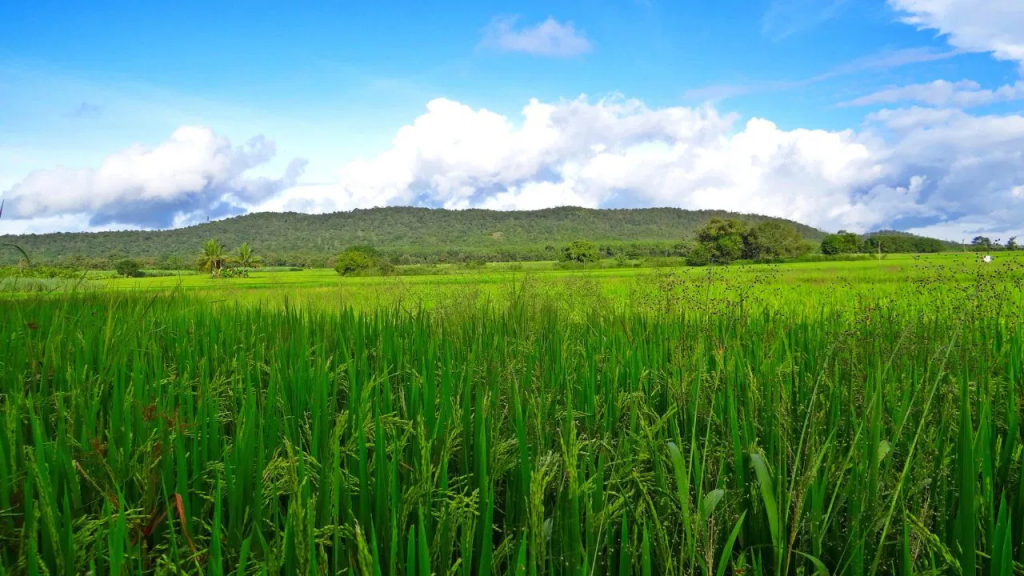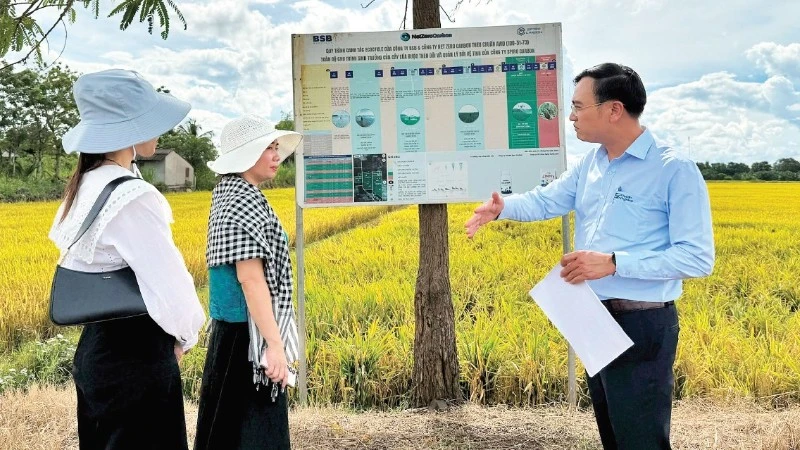Tags
Paddy Cultivation through Direct Seeded Rice (DSR) Method: Challenges and Solutions.
Direct Seeded Rice (DSR) emerged as a sustainable alternative to traditional paddy cultivation in response to growing water scarcity and rising input costs. Unlike conventional transplanting, DSR eliminates the need for nurseries and manual transplantation, resulting in significant savings of water, time, and labor.
KJ Staff.

Amid evolving agricultural practices, governments and scientists are increasingly advocating for water conservation methods. Traditional paddy farming takes a lot of water, and the groundwater table is continuously diminishing. Under these circumstances, the Direct Seeded Rice (DSR) technique is being encouraged. This method, nursery raising and transplanting, is avoided which conserve time as well as human effort. Some state governments are also providing financial support and subsidies to farmers who use this technique.
Farmers, however, encounter some major challenges when adopting this method, including weed management, soil moisture conservation, and seed germination at high temperatures. This article discusses the major challenges of the Direct Seeded Rice (DSR) technique and pragmatic solutions to address them.
What is the DSR Method?
DSR, or Direct Seeded Rice, is a method where paddy seeds are planted directly in the field. In this process, there is no requirement for preparing a nursery or transplanting seedlings. The seeds are directly planted in the field either manually or mechanically. In comparison with the conventional transplanting process, this method is more cost-effective, quicker, and requires less water.
Major Challenges in the DSR Method
- Weed Infestation
The biggest challenge in DSR is the problem of weeds. Since the field is not flooded like in traditional methods, weeds grow along with the paddy. These weeds compete with the main crop for nutrients, water, and sunlight, which can significantly reduce yield.
- Temperature and Germination Issues
In northern states such as Punjab, Haryana, and western Uttar Pradesh, the recommended sowing window for DSR is between May 20 and June 10. This period also witnesses extreme heat and dry conditions, which negatively affect seed germination and early plant survival. Frequent irrigation is required to maintain moisture.
- Soil Conditions
In many regions, the soil is dense, with low water-holding capacity and limited organic matter. This hampers early crop growth, making it difficult to manage the crop before the onset of monsoon. Poor root development leads to lodging (falling of plants) during the grain-filling stage.
- Deficiency of Micronutrients
In dry soils with poorly developed roots, the absorption of essential micronutrients like Iron (Fe) and Zinc (Zn) becomes difficult. As a result, plants grow weak and show stunted development.Solutions to These Challenges
- Use of Zytonic Technology during Field Preparation
Zytonic, developed by Zydex, is a biodegradable polymer-based technology that makes the soil softer and more porous. Its application offers several benefits:
- Improves seed germination up to 95%
- Enhances water-holding capacity
- Reduces irrigation needs even under high temperatures
- Promotes better root development, preventing lodging and improving nutrient uptake
- Increases beneficial microbial activity, aiding in organic nutrition
- Selecting Suitable Seeds for DSR
Choosing the right seed variety is crucial for a successful DSR. Since the plant population is denser in DSR, varieties with upright growth are preferable. Herbicide-Tolerant Varieties (HTVs) are especially effective for weed control. These varieties can withstand specific herbicides, allowing farmers to manage weeds efficiently without harming the crop. The Indian Agricultural Research Institute (IARI – Pusa) and several private companies have developed such varieties suitable for DSR.
- Moisture Retention Measures
Applying Zytonic during field preparation makes the soil loose and aerated, which improves water retention. Additionally, organic mulching and constructing raised beds with moist soil at intervals help conserve soil moisture. Light and timely irrigation is vital in DSR to keep the soil adequately moist until the monsoon sets in.
- Proper Nutrient Management
Since there is no nursery phase in DSR, providing timely nutrition during the early stages is essential. Nitrogen, phosphorus, iron, and zinc play key roles in early growth. These should be applied in the right amounts at the right time. Excess nitrogen can increase disease risk. Softer, aerated soil improves root development and enhances the absorption of nutrients like Fe and Zn.
Government Support and Incentives
State governments are encouraging DSR by providing financial support to farmers. In states like Punjab and Haryana, farmers receive subsidies ranging from Rs. 1,500 to Rs. 4,000 per acre. The agriculture departments also offer training, demonstration plots, and technical guidance to support farmers.
Benefits of the DSR Method
Flexible Crop Cycle – Early harvesting allows the timely sowing of Rabi crops.
Reduced Water Requirement – DSR saves approximately 30–35% water compared to traditional transplanting.
Lower Labor Cost – Eliminating nursery preparation and transplanting reduces labor needs.
Lower Input Cost – Less tilling and sowing expense, resulting in fuel savings.
Faster Maturity – The Crop matures 7–10 days earlier, allowing timely preparation for the next crop.
Lower Methane Emissions – DSR reduces methane gas emissions, benefiting the environment.
The DSR method is a revolutionary step in agriculture that can offer relief to farmers amid a growing water crisis. Though farmers may face some technical hurdles initially, these can be overcome through advanced technologies like Zytonic, proper seed selection, and government support. If adopted with correct timing, suitable varieties, and proper care, farmers can not only reduce cultivation costs but also enhance their yield.
https://krishijagran.com/blog/paddy-cultivation-through-direct-seeded-rice-dsr-method-challenges-and-solutions/Published Date: April 15, 2025






